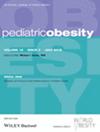Early life factors and hippocampal functional connectivity in children with overweight/obesity
Abstract
Objective
We investigated the association of anthropometric neonatal data (birth length and birth weight) and breastfeeding practices (exclusive and any breastfeeding) with hippocampal functional connectivity and its academic implication in children with overweight/obesity.
Methods
Ninety six children with overweight/obesity aged 8–11 years (10.01 ± 1.14), from the ActiveBrains project were included in this cross-sectional study. Anthropometric neonatal data were collected from birth records, whereas breastfeeding practices were reported by parents. A 3.0 Tesla Siemens Magnetom Tim Trio system was used to acquire T1-weighted and resting-state functional magnetic resonance images. Academic performance was assessed by the Woodcock-Muñoz standardized test. Hippocampal seed-based methods with post-hoc regression analyses were performed. Analyses were considered significant when surpassing Family-Wise Error corrections.
Results
Birth weight showed a positive association with the connectivity between the hippocampus and the pre- and postcentral gyri, and the cerebellum. In addition, breastfeeding was negatively associated with the connectivity between the hippocampus and the primary motor cortex and the angular gyrus. Any breastfeeding, in turn, showed a positive association with the connectivity between the hippocampus and the middle temporal gyrus. None of the connectivity outcomes related to early life factors was coupled with better academic abilities (all p > 0.05).
Conclusions
Our findings suggest that birth weight at birth and breastfeeding are associated with hippocampal connectivity in children with overweight/obesity. Despite this, how the results relate to academic performance remains a matter of speculation. Our findings suggest that clinicians should recognize the importance early life factors for potentially avoiding consequences on offspring's brain development.

 求助内容:
求助内容: 应助结果提醒方式:
应助结果提醒方式:


